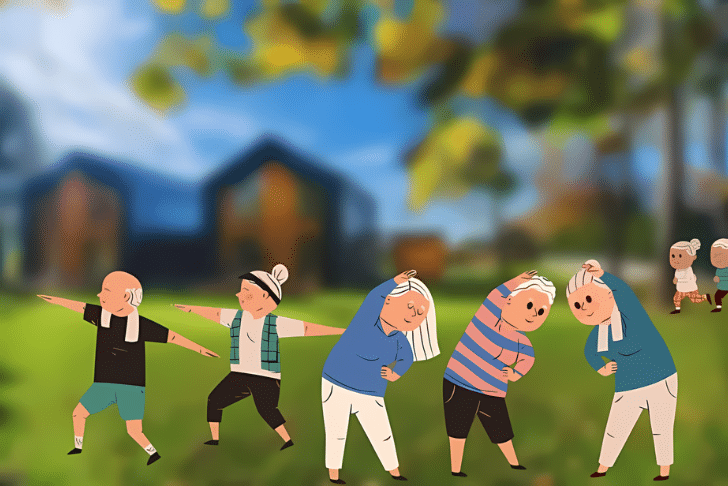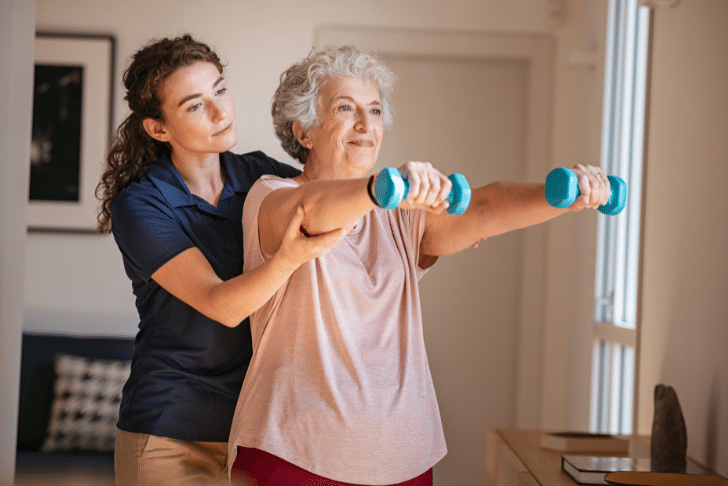In the pursuit of preserving the health and vitality of older adults, Preventing Falls in Older Adults Importance of Health Maintenance and Physical Activity enlightens you about the serious implications of falls for those above 65 years old. It’s a matter that concerns more than a quarter of this age group yearly, with potential triggers ranging from diminished physical faculties like eyesight and hearing, to chronic diseases including diabetes, heart disease, and cognitive impairments such as dementia. On top of that, the risk escalates with age-related muscle mass loss, termed as sarcopenia, and even certain medications. However, there’s a silver lining – you’re also guided about various preventive measures which include maintaining overall health and physical activity, regular check-ups, managing medications, and even certain home improvements and footwear.
Furthermore, it emphasizes the significance of bone health by suggesting adequate calcium and Vitamin D intake, maintaining a healthy weight, and limiting alcohol consumption. The aim is not just to reduce falls, but to mitigate the impact in case they do occur. By reinforcing the bones and following prevention protocols, the frequency of falls leading to emergency room visits and hospital stays can be minimized.

Understanding the Causes of Falls in Older Adults
As we age, the likelihood of experiencing a fall tends to increase. This can be attributed to several factors that come with aging.
The role of diminished eyesight, hearing and reflexes
With advancing age, physical changes occur in our bodies. A decrease or loss in the sharpness of eyesight and hearing can have a significant impact on balance and spatial awareness – both are key players in maintaining stability while walking or standing. Your reflexes also play a part in preventing falls. As you get older, the speed of your reflexes tends to decline, making it harder to break or correct a fall when you stumble or trip.
Impact of chronic conditions such as diabetes, heart disease, cognitive impairment and more
Chronic conditions such as diabetes and heart disease can also contribute significantly to the probability of a fall. These can lead to dizziness, a lack of coordination and an increased feeling of weakness generally. Cognitive impairments, such as dementia, can also raise the risk as confusion or distraction can lead to a trip or slip.
Effects of Medications on the Risk of Falls
Certain medications might increase the risk of tail. They can cause dizziness, light-headedness, confusion or dehydration. They might also cause an interaction that results in impaired stability and coordination.
Understanding Sarcopenia and its link to falls
Sarcopenia is the age-related loss of muscle mass. As muscle strength decreases, so does mobility and balance. This can make it more difficult to correct false steps and recover balance, both of which can prevent a fall.
The Statistics on Falls Among The Elderly
Annual Statistics of Falls in Older Adults
Annually, more than one in four adults aged 65 and older experience falls. This means falls are common among the elderly and the figure is likely to rise as life expectancy increases.
Prevalence of Serious Health Problems and Long-Term Disabilities from Falls
Falls are not to be taken lightly; they lead to serious health issues such as head injuries or fractures. In the worst-case scenarios, falls can result in long-term disabilities which significantly affect the quality of life.
Health Maintenance to Prevent Falls
The Importance of Regular Sight and Hearing Checks
Having regular sight and hearing checks is critical in maintaining good health and reducing the risk of falls. When vision and hearing are optimized, balance can be maintained more effectively.
Managing Chronic Conditions
Active management of chronic conditions such as heart disease, diabetes and other conditions can help prevent falls. This can involve medication management, incorporating a balanced diet, and a regular exercise regime.
Proper and Effective Management of Medication Intake
Effectively managing medication intake is another crucial aspect of fall prevention. Avoiding a complex medication regimen and staying well-hydrated can help prevent side effects such as dizziness or confusion.
Physical Activity as a Preventative Measure
Types of Physical Activities Suitable for Older Adults
Physical activities that improve balance, flexibility, and strength of legs can lower the risk of falls. These include activities such as dancing, tai chi, yoga, swimming, or simply walking.
The Role of Physical Activity in Building Strength and Balance
Regular physical activity strengthens your muscles and improves coordination and flexibility – all of which can improve balance and reduce the risk of falls.
How Regular Physical Activity Increases Overall Health
Physical activities not only significantly contribute to fall prevention, but they also enhance overall health. They boost self-confidence, enhance cardiovascular health, and improve mental wellbeing, among other significant benefits.

Role of Diet in Preventing Falls
Benefits of Adequate Calcium and Vitamin D Intake
A diet rich in calcium and vitamin D helps maintain bone strength. Strong bones are less likely to fracture even in the event of a fall.
Keeping Bones Healthy Through a Balanced Diet
In addition to calcium and vitamin D, other nutrients such as protein, magnesium, and vitamin K found in legumes, green leafy vegetables, dairy, and lean meat, can also contribute to bone health.
Managing Weight to Mitigate Fall Risks
Maintaining a healthy weight prevents unnecessary stress on joints and would also avoid the instability that might be caused by being underweight or overweight.
Harmful Habits and Their Impact on Fall Risks
Impact of Smoking on Bone Health
Tobacco smoking has a detrimental impact on bone health. It can result in lower bone density and slower healing of fractures, which can in turn lead to a greater risk of serious injury from falls.
How Alcohol Increases Fall Risks
Alcohol can impair balance and coordination, thereby increasing the risk of accidents and falls. It can also affect bone health leading to higher risk of fractures in case of falls.

Home Improvements for Fall Prevention
The Role of Appropriate Household Design in Preventing Falls
Home modifications can help reduce the likelihood of falls. This can include installing handrails, improving lighting, removing trip hazards, and using non-slip mats.
Types of Modifications Required for a Safer Home Environment
Possible modifications might include installing a step-free shower, securing rugs and loose carpets, ensuring that walkways are clear of clutter, and making sure that commonly used items are easily accessible.
Importance of Appropriate Footwear in Fall Prevention
How Footwear Affects Stability
The shoes you wear have a serious impact on your stability. Poorly fitting shoes, high heels or slippery soles can lead to falls.
Choosing the Right Footwear for Older Adults
Choosing well-fitting, sturdy shoes with non-slip soles can improve balance and help in preventing falls. Comfort should be the highest priority.
Steps to Follow After a Fall
Importance of Remaining Calm After a Fall
In the aftermath of a fall, it is essential to remain calm and composed. Panic can lead to hasty and potentially harmful actions.
Assessing for Injury Before Attempting to Move
Before you attempt to move, it’s crucial to assess your body for any pain or injuries.
Getting Appropriate Help When Needed
If you’re unable to get up or experience severe pain, call for medical help immediately.
The Relation Between Osteoporosis and Falls
Understanding Osteoporosis and How it Weakens Bones
Osteoporosis is a condition that weakens bones, making them prone to fractures. This means even a minor fall can result in a serious injury in older adults with osteoporosis.
How Osteoporosis Increases Risk of Serious Falls Injuries
Osteoporosis considerably magnifies the risks associated with falls. With weakened bones, even a small stumble can cause a fracture.
Strategies for Managing Osteoporosis to Reduce Fall Risks
Managing osteoporosis involves consuming a balanced diet rich in calcium and vitamin D, engaging in weight-bearing and strength-building exercises, quitting smoking, limiting alcohol intake, preventing falls, and taking osteoporosis medications as prescribed. This condition should be monitored and managed under the guidance of a healthcare professional.
Preventing falls isn’t merely about avoiding injuries. It’s also about maintaining independence and mobility as you age. With the right approach, you can navigate your golden years with confidence and safety.
